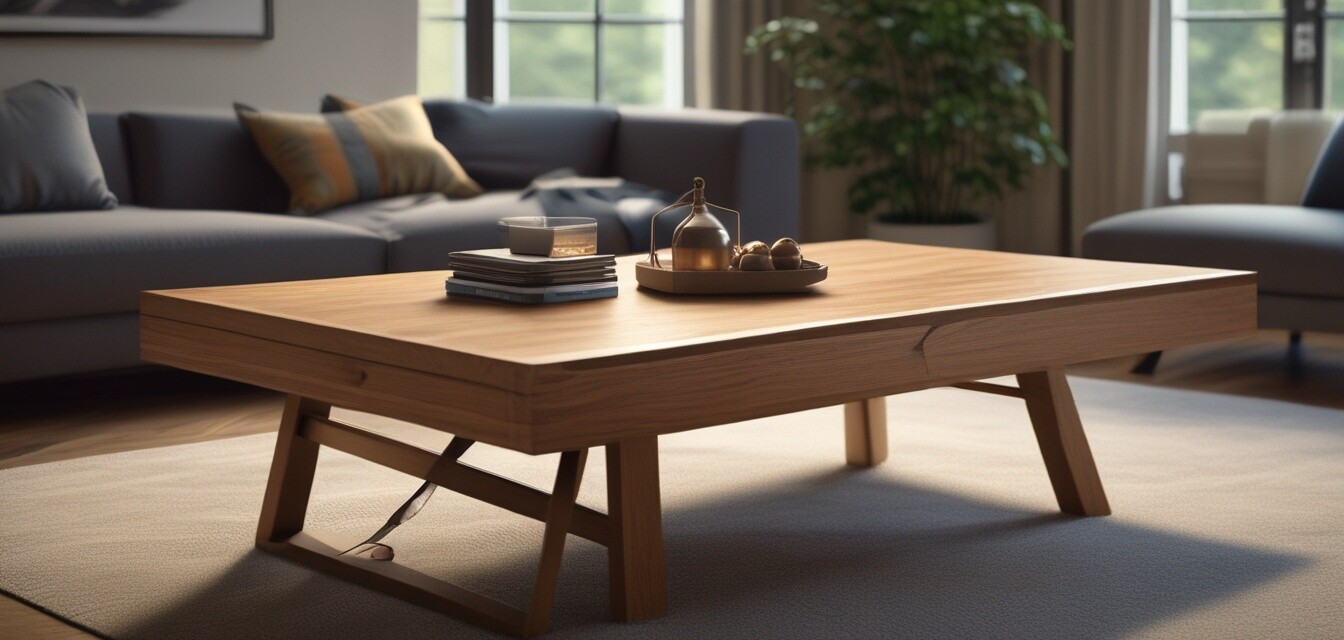
The impact of technology on solid oak furniture design
- Technology brings innovative features to solid oak furniture.
- Smart furniture maintains classic designs while improving functionality.
- Consumer preferences shift towards more functional furniture.
- Sustainable practices in oak sourcing are enhanced through technology.
- New trends combine tradition with modern aesthetics.
The world of furniture design is rapidly evolving, and solid oak furniture is no exception. As technology progresses, it alters not only the way we interact with furniture but also how it is crafted and perceived. This article explores how innovative technology is influencing the design and functionality of solid oak furniture, providing insights into emerging trends that cater to modern consumer preferences.
Understanding the role of technology in furniture design
Technology has revolutionized various industries, and furniture design is no different. Designers now have access to advanced tools and techniques that enhance creativity and productivity, leading to more innovative furniture solutions. Here are some key aspects of technology’s role in solid oak furniture design:
- Computer-Aided Design (CAD): Helps in creating precise designs and prototypes.
- Laser Cutting and CNC Machines: Allows for intricate designs and cuts that were not possible manually.
- Sustainable Manufacturing Tech: Enables efficient and eco-friendly production processes.
- Smart Features Integration: Facilitates the addition of technology like wireless charging and built-in speakers.
Smart technology and solid oak furniture
Furniture is becoming smarter, and solid oak pieces are not left behind. Consumers today seek furniture that offers functionality alongside aesthetics. Here are some examples of how technology is making solid oak furniture smart:
| Smart Feature | Description |
|---|---|
| Wireless Charging | Integrated charging pads allowing devices to charge without cables. |
| Smart Lighting | Built-in lighting systems that can be controlled remotely. |
| Sensors | Furniture that can interact with other smart home products. |
| Adjustable Configurations | Tables or desks that can change height with voice commands. |
Consumer preferences and functionality
Modern consumers are increasingly mindful about how furniture fits into their lifestyles. The integration of technology into solid oak tables responds directly to these evolving demands:
- Increased functionality: Consumers value piece that serves multiple purposes.
- Easy integration into smart homes: Designed to complement existing technology.
- Enhanced convenience: Features like wireless charging reduce clutter.
- Personalized solutions: Customization options allow for a tailored experience.
Sustainable practices influenced by technology
As the demand for sustainable products grows, technology aids in environmentally friendly practices within the oak furniture industry. Here are some ways technology fosters sustainability:
| Area | Traditional Methods | Technological Advancements |
|---|---|---|
| Material Sourcing | Manual identification of sustainable sources. | Data analytics for optimal sourcing practices. |
| Production | Labor-intensive, slower processes. | Automation that reduces waste and enhances efficiency. |
| Distribution | Standard delivery models. | Smart logistics that optimize routes and reduce carbon footprints. |
Emerging trends in solid oak furniture design
The future of solid oak furniture lies at the intersection of tradition and modern technology. Here are some trends to watch:
- Modular Designs: Furniture that can be customized or expanded based on user needs.
- Hybrid Materials: Blending solid oak with other sustainable materials for enhanced functionality.
- Vintage Meets Modern: Classic solid oak designs are coupled with contemporary smart features.
- Eco-Conscious Design: Focus on zero-waste methods in production.
Conclusion
The impact of technology on solid oak furniture design marks a new era of innovation that respects the rich history of craftsmanship while embracing the future. Consumers looking for a blend of timeless aesthetics and modern functionality will find solid oak furniture increasingly equipped to meet their needs. As technology continues to transform the industry, we can expect to see more sophisticated features and sustainable practices integrated into our favorite furniture pieces. Keeping abreast of these trends allows consumers to make informed choices, ensuring their investments in furniture reflect both style and practicality.
Tips for integrating technology into solid oak furniture
- Research innovative designs before making a purchase.
- Consider the layout of your space for optimal functionality.
- Think about your lifestyle and how smart features can enhance it.
- Look for furniture that complements your home’s technology ecosystem.
Pros
- Enhanced functionality of living spaces.
- Timeless design meets modern needs.
- Eco-friendly practices improve sustainability.
- Owners can enjoy smart features without sacrificing aesthetics.
Cons
- Higher investment costs may deter budget-conscious buyers.
- Potential for reliance on technology that may require updates.
- Maintenance may increase with added smart features.
Explore more in solid oak furniture
Stay informed about solid oak furniture trends by visiting our other related blog articles: